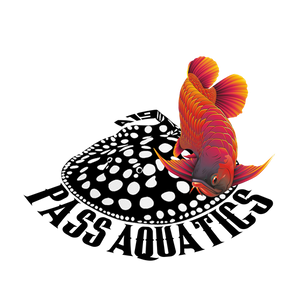
Channa stewartia
Note: Due
to variations within species, your item may not look identical to the image
provided.
|
Synonyms |
Ophiocephalus stewartii |
|
Distribution |
India and Nepal. |
|
Sexual Dimorphism |
In mature fish, the females are larger and fuller
|
|
Maximum Size |
25cm (9.8") |
|
Temperature |
Cooler-than-average: 20-25 deg C (68-77 deg F) |
|
Water Parameters |
pH: 6.0-8.0, dH: up to 20 degrees. |
|
Compatibility |
Species-only aquaria. |
|
Lighting |
Dim (brighter lighting should be diffused with
|
Care
The Assamese Snakehead is known from the Bagmati,
Brahmaputra, Gandaki, and Koshi drainages in India, and the Bagmati, Gandaki,
Kankai, Kamala, Karnali, and Koshi rivers in Nepal. Here it occurs in a wide
variety of different habitats including both still ponds and running streams.
The aquarium should be spacious (at least 5ft long) with plenty of hiding
places amongst driftwood, rocky caves, and areas of dense planting. Provide an
abundance of surface cover in the form of floating plant species to help
diffuse the light. Filtration should be efficient with areas of moderate water
movement and quieter resting areas out of the current, and frequent partial
water changes are important to help keep nitrate to a minimum. It is essential
that the aquarium has a tight fitting lid, and a small gap must be left between
the surface of the water and the coverslides in order for the fish to come up
and take in humid air. Snakeheads are obligate air breathers, which means they
must have access to atmospheric air or they will drown. This is a territorially
aggressive species that is best maintained singly or as a compatible
male-female pair. In order to achieve this, some aquarists prefer to obtain a
group of juveniles and wait until a pair forms naturally before re-homing the
others. These fish are best maintained in a species-only aquarium, but if
tankmates are desired, they must be at least as large as the adult snakeheads,
or they will become a snack. Water must be cooler-than-average, and this
species benefits from a seasonal change in temperature to emulate the wet and
dry months. During the winter period, the fishes' metabolism will slow down and
they will not require as much food. These annual cooler periods seem to be imperative
for long-term health, vitality, and breeding potential. May also be seen on
sale as the Golden Snakehead.
Feeding
Small live or frozen foods are best for younger fish e.g.
bloodworm, white mosquito larvae, vitamin-enriched brineshrimp etc. Larger
specimens will take bigger foodstuffs such as Mysis shrimp, krill, prawns, fish
flesh, and chopped earthworms (make sure these are clean and free of any
pesticides). May eventually take some dried foods, but this should not be
relied upon.
Breeding
Unknown, but most likely a nest builder that provides eggs
and fry with bi-parental care.
